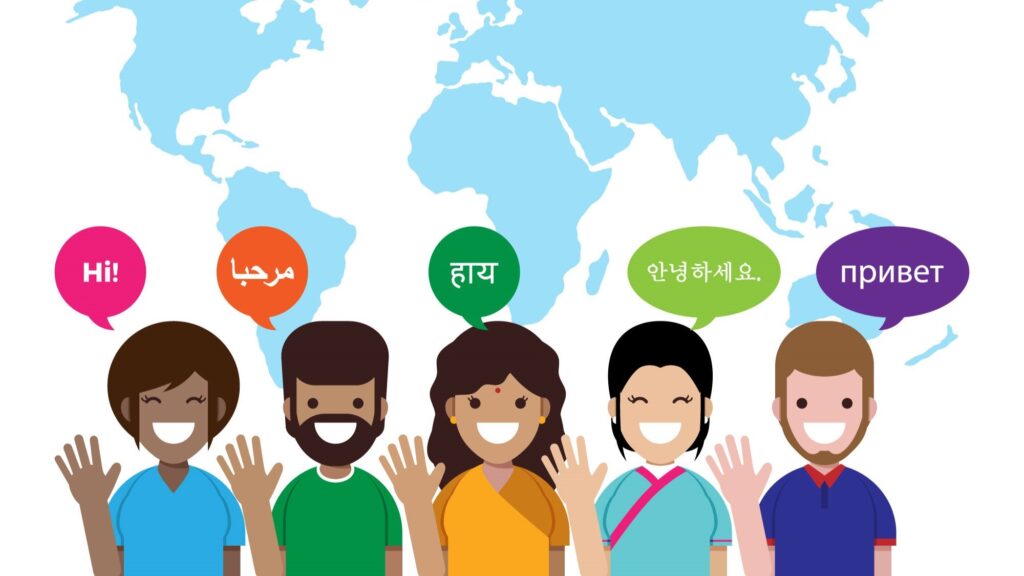
Taiwan’s Vibrant Linguistic Tapestry
Taiwan is more than just a thriving island nation in East Asia—it’s a linguistic melting pot where multiple languages and dialects coexist. If you’re planning to travel, expand your business, or study in Taiwan, understanding its language landscape is essential.
From the official language of Taiwan to deeply rooted indigenous tongues, Taiwan reflects a unique blend of historical influence and cultural identity.
As a trusted global language service provider, VerboLabs helps businesses, brands, and individuals localize effectively for Taiwan with expert translation, dubbing, and voice-over services tailored to the region’s complex language demands.
The Official Language of Taiwan: Mandarin Chinese
The official language of Taiwan is Mandarin Chinese, also known as Standard Chinese or Putonghua.
- Where it’s used: It’s the language of the government, national media, and public education.
- Example: In schools across Taipei and Kaohsiung, children are taught in Mandarin from kindergarten onward.
- Business & daily life: It dominates professional communication and public signage.
Mandarin serves as the linguistic bridge between Taiwan’s various regions and communities, ensuring coherence and national unity.
What is Regional Languages and Dialects in Taiwan
1. Taiwanese Hokkien (Taiwanese Minnan)
- Spoken by 70% of Taiwan’s population, especially in the south.
- Commonly used in homes, local markets, TV dramas, and pop culture.
- Example: A small business owner in Tainan might greet customers in Taiwanese Hokkien rather than Mandarin.
2. Hakka Language in Taiwan
- Spoken by the Hakka ethnic group, especially in areas like Hsinchu and Miaoli.
- The language has its phonetics and grammar.
- Example: Local radio stations often feature Hakka-language programming to serve the community.
3. Indigenous Austronesian Languages
Taiwan officially recognizes 16 indigenous tribes, each with their language, rooted in Austronesian linguistics. These languages are facing extinction but are being preserved through education and government programs.
- Example: The Bunun and Atayal languages are taught in tribal schools and used in cultural festivals.
Languages Used in Business and Education
1. Mandarin Dominance
- Still, the primary language spoken in Taiwan for business, especially in finance, tech, and education.
- Example: A multinational firm launching a product in Taiwan would prioritize Mandarin translations for ads and legal documents.
2. English in Taiwan
- Widely taught in schools, increasingly used in corporate communication and higher education.
- The Taiwanese government aims to become a bilingual nation by 2030.
- Example: Universities like NTU offer bilingual degree programs in science and business.
3. Japanese Influence
- Many older Taiwanese, especially those born before 1945 (under Japanese rule), still understand Japanese.
- Some Japanese phrases and cultural references remain in use, particularly in pop culture and cuisine.
Script and Writing System: Traditional Chinese in Taiwan
Taiwan uses Traditional Chinese characters, which are more complex than the Simplified Chinese used in mainland China.
- Where it’s seen: Government documents, street signs, books, menus, and websites.
- Example: If you’re localizing a website for Taiwanese users, your text must be in Traditional Chinese, not Simplified.
VerboLabs offers expert Chinese Translation Services using Traditional Chinese characters, ensuring linguistic and cultural precision for your Taiwan-based audience. → VerboLabs Chinese Translation Services
Language Trends in Modern Taiwan
1. Rise of English Learning: The younger generation is increasingly proficient in English due to early exposure and digital education platforms.
2. Bilingual Nation by 2030: Taiwan’s government is pushing for widespread English adoption in schools, workplaces, and public services.
- Example: Bilingual signage in MRT stations is becoming the norm.
3. Global Pop Culture Influence: K-pop, anime, and English-language media have introduced slang, hybrid language use, and multilingual fluency among youth.
Common Phrases to Know in Taiwan
Here are a few useful phrases for travelers and expats:
| English | Mandarin (Traditional) | Taiwanese Hokkien |
| Hello | 你好 (Nǐ hǎo) | Lí hó |
| Thank you | 謝謝 (Xièxiè) | To-siā |
| How much is this? | 這個多少錢?(Zhège duōshǎo qián?) | Chit-ê kiáⁿ-tsē? |
These phrases can go a long way in building local rapport, especially in smaller towns or family-run shops.
About VerboLabs
At VerboLabs, we offer a complete suite of multilingual content services to help you connect with global audiences seamlessly and professionally.
VerboLabs offers expert translation, AI dubbing with human voiceovers, multilingual subtitling, and localization for websites, apps, and games. We specialize in Asian languages, legal, academic, and technical content. Our team also delivers transcreation and multilingual content writing—blending cultural insight with accuracy for global communication that truly connects.

Let VerboLabs help you go global with content that speaks the language of your audience—clearly, professionally, and effectively.
Conclusion
Taiwan’s language landscape is a rich mix of Mandarin, Taiwanese Hokkien, Hakka, indigenous tongues, and growing English use. This diversity makes Taiwan an exciting hub for international collaboration, business expansion, and cultural exploration.
Whether you’re launching a product, creating a marketing campaign, or translating documents for Taiwan, VerboLabs offers customized language solutions that ensure cultural authenticity and linguistic accuracy.
FAQs
A: Mandarin Chinese is the official and most widely spoken language in Taiwan, used in education, media, and government.
A: English is becoming more common, especially among younger generations and in urban areas, but fluency levels vary. It’s not widely used in rural regions.
A: Cantonese is rarely spoken. Japanese may be understood by some older adults due to historical influence, but it’s not used officially or in daily communication.



